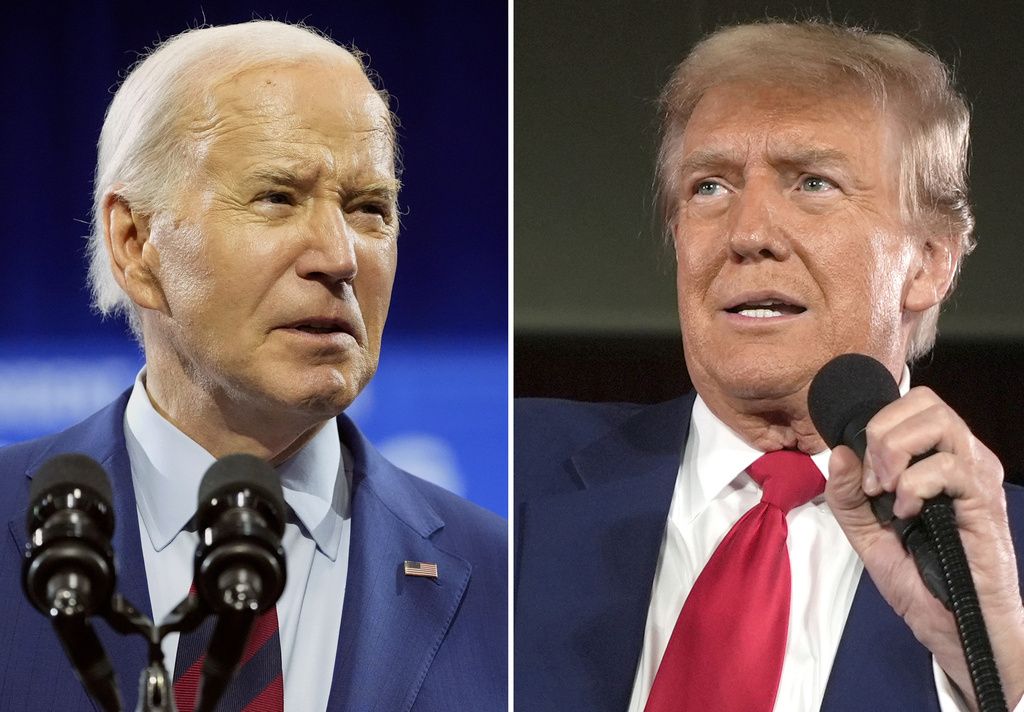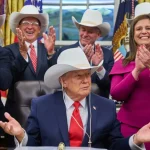

A range of economic developments in the coming months could tip the presidential election toward or away from President Joe Biden.
Biden is at the mercy of economic factors, such as income growth, inflation, changes in interest rates, and fluctuations in gas prices, because the presidential contest appears to be quite close at the moment. Normally, it would take seismic economic shifts to alter the course of a presidential election within the last year, as perceptions of the president’s handling of economic affairs have hardened by that point.
But because Biden and Former President Donald Trump appear to be almost evenly matched in national polls and in the Electoral College, smaller changes could be the difference between winning and losing. A jump in gas prices, for instance, could sink Biden.
Here’s how economic variables work in election models.
The most basic model
The best-known election model based on economic variables is that of Yale professor Ray Fair, who has been running a version of it for every presidential election since 1980. In 11 elections, it has predicted the popular vote correctly seven times (but none of the last three).
The model is simple, essentially boiling down to two variables: gross domestic product growth and inflation.
As of April 25, the model projected that Biden would win 51.72% of the popular vote.
That would not necessarily translate into a victory in the Electoral College, however. Biden won 52.2% of the popular vote in 2020 and barely beat Trump, edging him by tiny margins in several tipping-point states. A minuscule change in the popular vote share could have resulted in Trump winning.
As another point of comparison, Hillary Clinton won 51.2% of the popular vote in 2016 but lost in the Electoral College to Trump.
What would it take to tip Biden’s vote share to the Clinton level based on the Fair model? One possibility would be inflation-adjusted per capita GDP growth coming in below a roughly 2% annual rate in the next two quarters. By comparison, it was 2.4% in the first quarter and 2.6% the quarter before. The other possibility would be for inflation to rise, but it would have to massively spike over the next two quarters to an annual rate well over 10%.
Of course, if growth slowed and inflation rose, smaller movements would be needed to sink Biden.
A more sophisticated model
This year, Moody’s Analytics published an election forecast model that predicts the winner based on the Electoral College and incorporates a wider range of economic variables.
Specifically, the model takes into consideration gas prices, household income growth, mortgage rates, and consumer confidence.
As of January, the model predicted that Biden would win the Electoral College — narrowly.
The Moody’s Analytics model is not publicly available, but the authors shared a sensitivity analysis that shows how much each economic variable would have to change to tip the election to Trump.
Gas prices would have to rise above $4 in the fourth quarter. The average price of gas over the past 12 months has been around $3.50 to $3.60 per gallon, according to AAA.
Or, the interest rate on a 30-year fixed-rate mortgage would have to rise to 8.65%. It has bounced around between 6.6% and 7.2% in early 2024, according to Freddie Mac.
Or, household real income growth would have to crater by 3.8% year-over-year in the third quarter. That won’t happen outside of a major recession.
The situation facing Biden
For Biden, many of the most prominent economic indicators are favorable. GDP growth, adjusted for inflation, has been relatively robust and is likely to continue at a healthy pace in the second quarter. Monthly payroll job growth has also been strong, and the unemployment rate is not far off the lowest it has been in decades.
Yet the high inflation rate of the past few years is a major problem for Biden. The inflation rate has come down in recent months but remains high. And the overall consumer price index has risen more than 20% since he took office.
High interest rates, which are partly a result of the bout of inflation and the Federal Reserve’s efforts to tame it, are also weighing on his political fortunes, as households suffer with higher rates on mortgages, auto loans, credit cards, and more.
Persistently high inflation and interest rates help explain why consumer sentiment is much lower than might be expected given the news about output and jobs.
CLICK HERE TO READ MORE FROM THE WASHINGTON EXAMINER
On balance, the public is highly frustrated with Biden’s economic stewardship. Nearly 60% of respondents disapprove of his performance on the economy, according to the RealClearPolitics average of polls.
So while the economic fundamentals favor Biden to an extent, the economy is clearly a liability for him in terms of voter sentiment.







